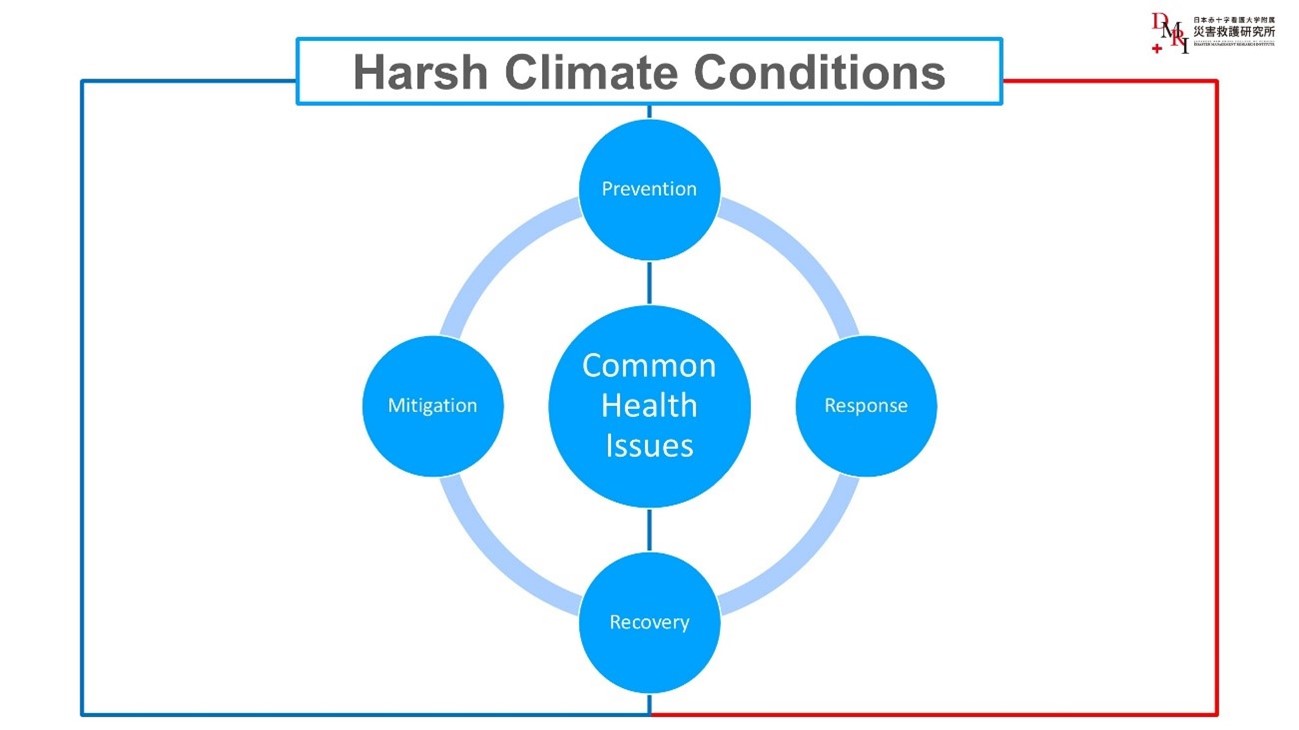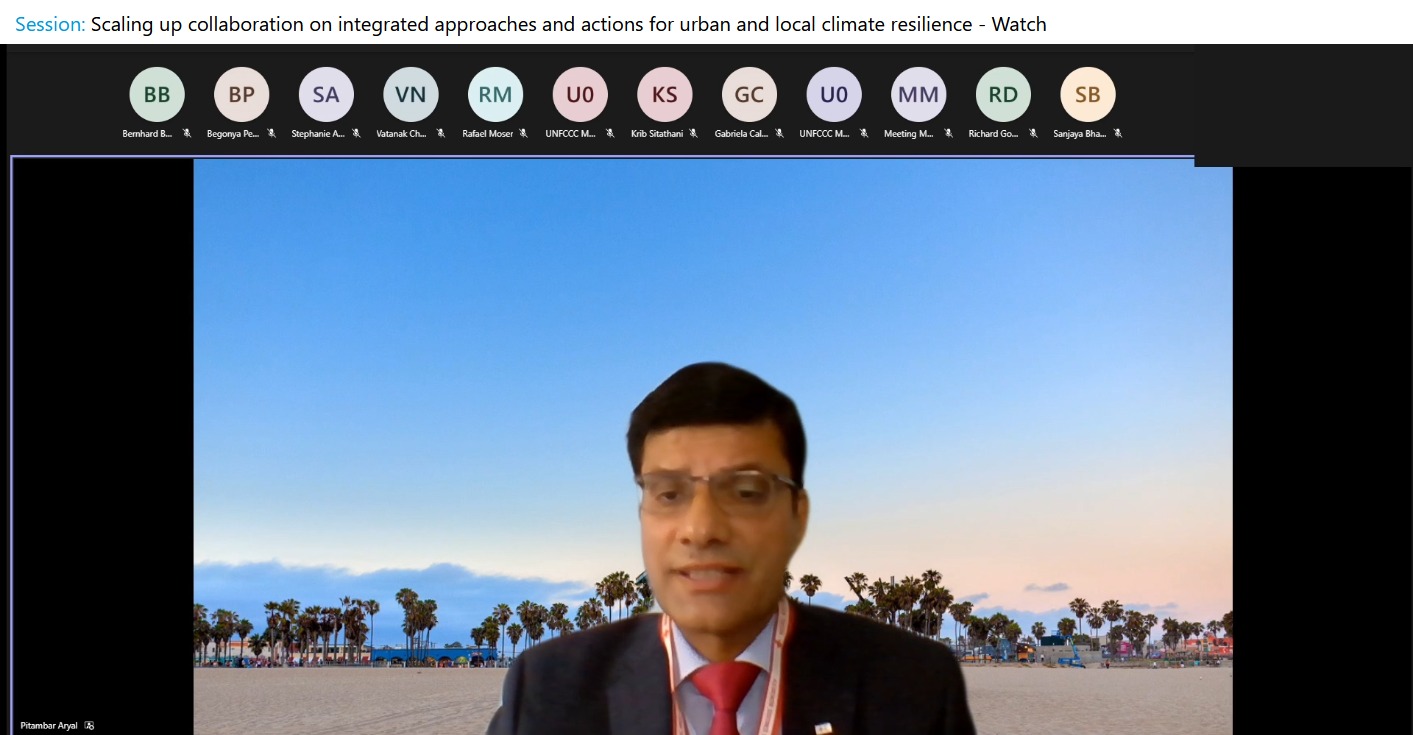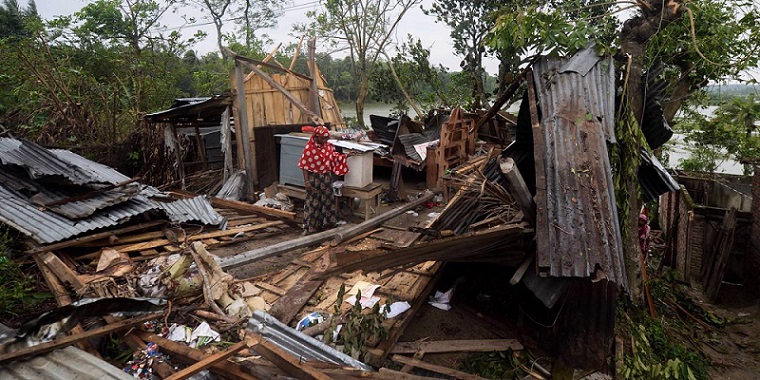Preparing for the Disasters in Harsh Weather Conditions: Positioning Disaster Management within the Climate Framework
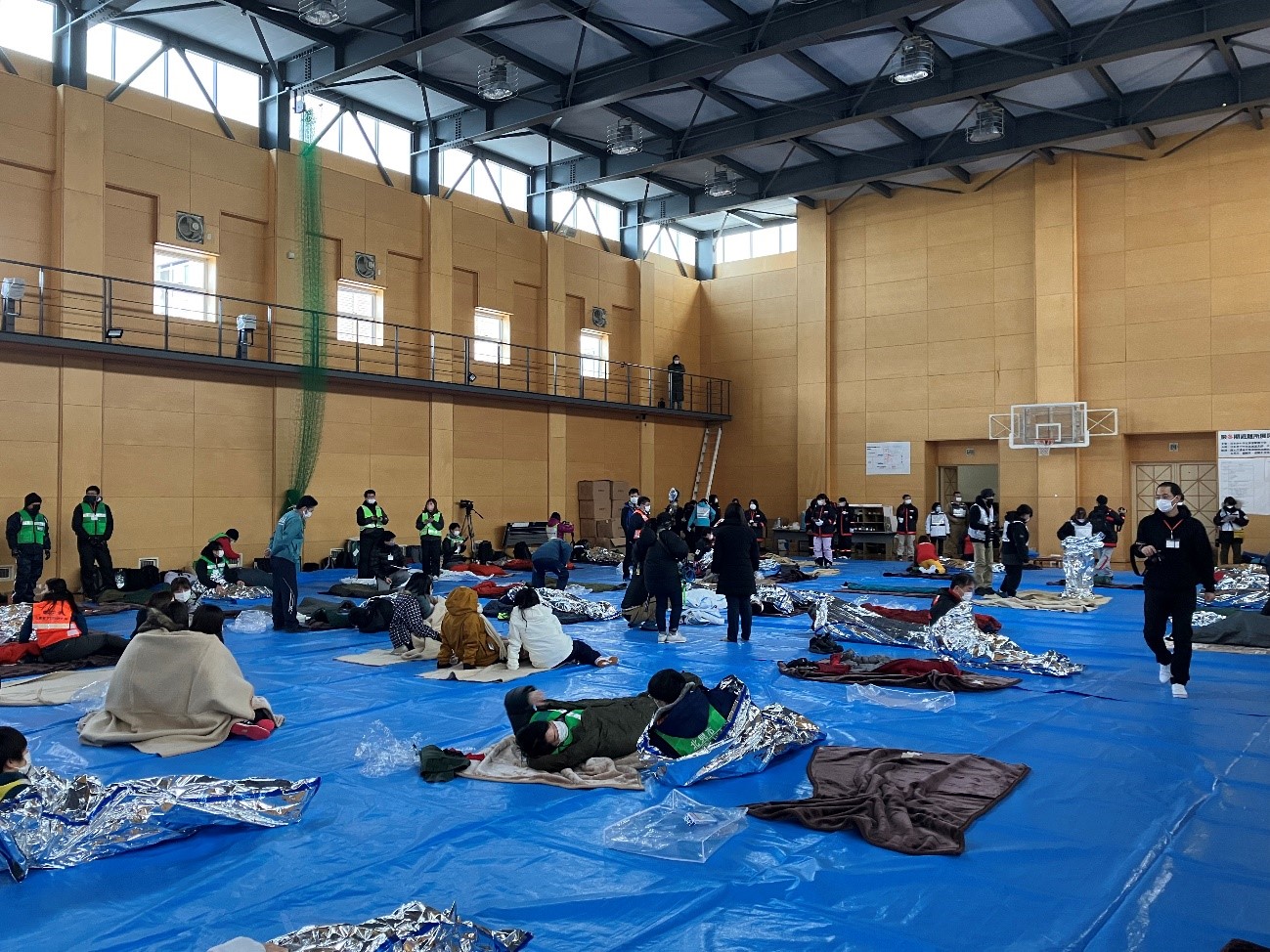
Picture this: A powerful earthquake strikes, and thousands flee to a gymnasium-turned-shelter. Instead of finding safety, evacuees face a new threat: a heat wave pushes indoor temperatures to a stifling 36°C (97°F), with no air conditioning due to widespread power outages. This scenario, increasingly likely due to climate change, is what the Japanese Red Cross is actively preparing for. Anticipating the complex challenges of extreme weather, they're partnering with various organizations to develop innovative solutions. By simulating evacuation shelters in both scorching heat and freezing cold, they're redefining disaster management for a changing climate to ensure that when crises compound, solutions are already in place.
Japan’s Unique Challenges in Disaster Preparedness
Japan is one of the most disaster-prone countries in the world, facing a wide range of natural hazards including earthquakes, tsunamis, typhoons, floods, and heavy snowfall. These disasters can occur individually or in combination, making response efforts particularly challenging. For example, the Great East Japan Earthquake and Tsunami in 2011 and the Noto Peninsula earthquake on January 1, 2024, both struck during winter, leading to casualties from hypothermia. In contrast, summer months often bring devastating floods and typhoons, causing widespread damage across the country.
During these disasters, public facilities such as school buildings, designated by local governments, serve as evacuation shelters. However, past disasters have revealed various issues with living conditions in these shelters. Problems such as non-functioning flush toilets and hand-washing facilities due to water outages, malfunctioning air conditioning due to power failures, evacuees having to sleep on gymnasium floors without beds, and a lack of privacy have been frequently reported.
In this context, Japan's disaster management must therefore tackle two major challenges: (1) ensuring adequate living conditions in evacuation shelters, and (2) effectively operating shelters under extreme weather conditions. To address these challenges, the Humanitarian Technology Unit at the Disaster Management Research Institute, in collaboration with the Japanese Red Cross Hokkaido College of Nursing, Japanese Red Cross Kumamoto Hospital, Japanese Red Cross Ishinomaki Hospital and the Japanese Red Cross Headquarters, are working on research and development of various technologies required for evacuation under severe climatic conditions, as well as improving training related to shelter operations during extreme winter and summer periods.
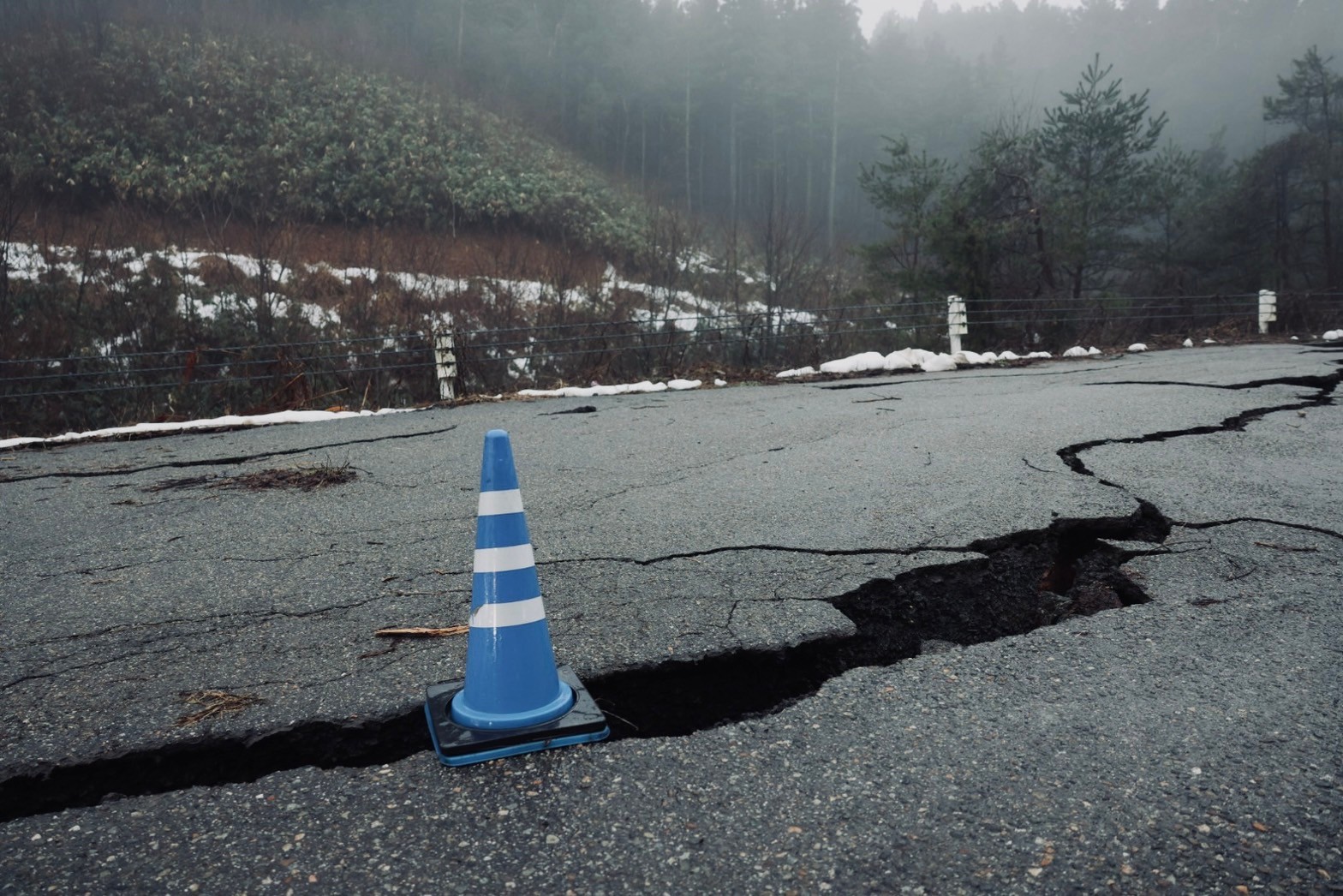
Indoor Climate-Related Health Risks: A Growing Concern
In Japan, the annual number of deaths due to hypothermia often matches or even exceeds those from heatstroke. According to the Ministry of Health, Labor, and Welfare, between 2013 and 2022, 11,852 people died from hypothermia, compared to 10,395 deaths from heatstroke. Notably, around 40% of heatstroke cases and over 70% of hypothermia incidents occur indoors.
A possible reason behind the high-number if indoor incidents is that elderly people – those who are most vulnerable to extreme temperatures – often hesitate to use air conditioning to save on energy costs, which increases their risk of heatstroke. On the other hand, a survey of 2,190 Japanese households revealed that over 90% experience winter indoor temperatures below 18°C – the World Health Organization's recommended minimum.
The risk of heatstroke and hypothermia increases significantly during disasters that cause power outages, leading to malfunctioning heating and cooling systems. After sudden disasters such as earthquakes, everyday clothing and tools become the first line of defense before external aid arrives or evacuees receive stocked items at shelters. Therefore, the clothing and equipment used daily play a critical role in protecting people during emergencies.
To better prepare for these risks, it’s important to have everyday clothing with protective qualities such as waterproofing, breathability, insulation, and cooling capabilities, as well as camping equipment that can be useful during evacuations. Incorporating such items into daily life is a promising approach to disaster preparedness. Recognizing this need, the Humanitarian Technology Unit is collaborating with private companies to develop everyday clothing and tools designed to prevent hypothermia and heatstroke.
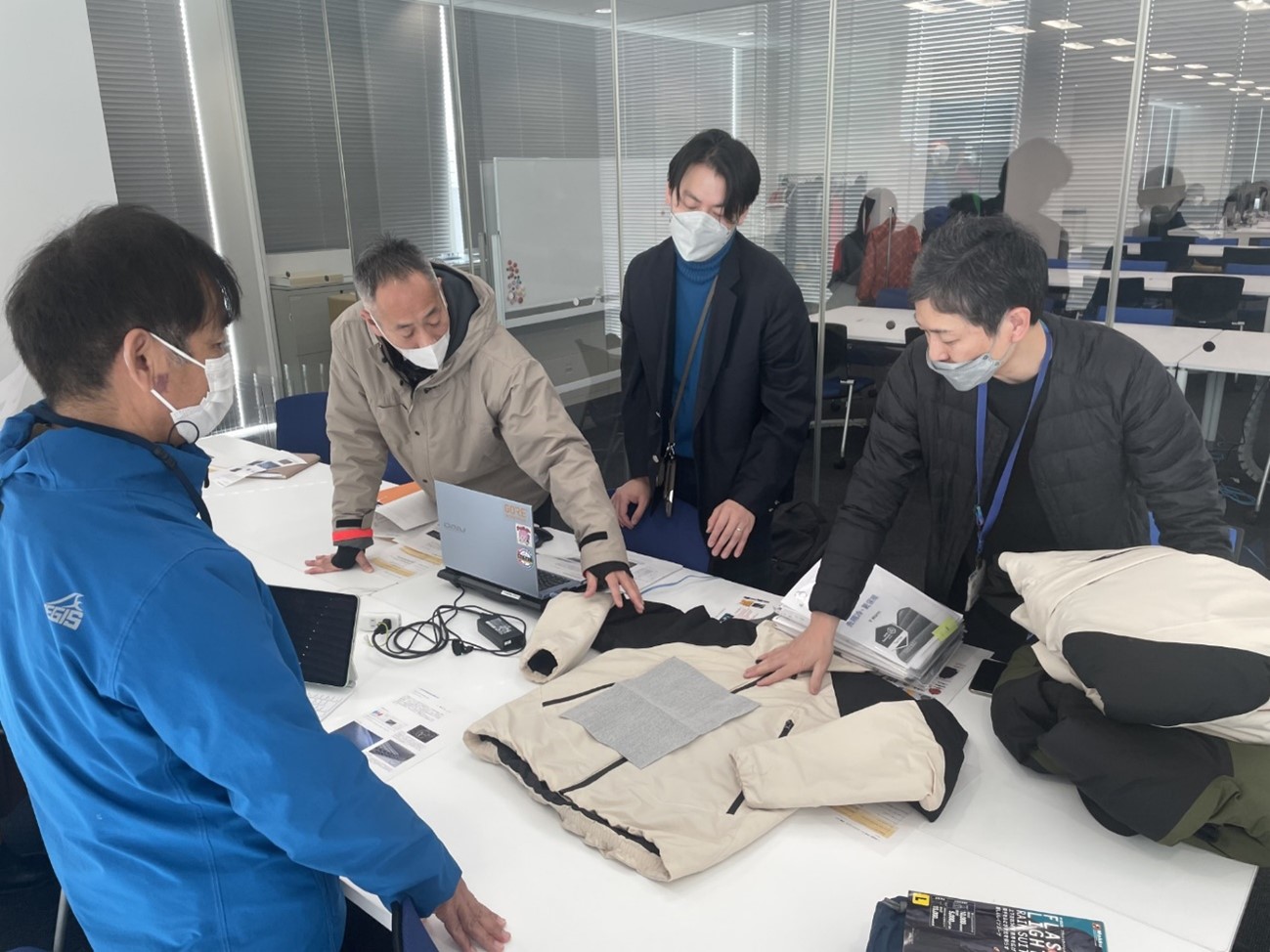
Innovations in Winter Shelter Management: Cold-Weather Solutions
Since 2009, the Japanese Red Cross Hokkaido College of Nursing has been engaged in research on disaster countermeasures in cold regions, with a particular focus on maintaining the health of disaster victims during evacuation. Professor Masahiro Nemoto leads severe winter disaster drills that involve disaster prevention officials from local governments in the Hokkaido region, as well as disaster medical professionals from the Japanese Red Cross and other related organizations.
These drills simulate power and water outages at temperatures approaching minus 20°C, testing various methods to establish viable evacuation conditions for food, sleeping, sanitation, and heating in shelters. The drills also include experiential verification of staying in vehicles with engines turned off during snowfall.
In January 2023, researchers from the Humanitarian Technology Unit participated in a drill to evaluate the functionality of clothing and equipment necessary for maintaining health in a gymnasium environment with limited heating and a temperature of minus 16°C. Based on these verifications, the Institute for Disaster Relief signed a partnership agreement in July 2023 with one of Japan's largest apparel and outdoor equipment manufacturers to jointly develop affordable, high-quality clothing and outdoor gear.


Through this collaboration, Professor Nemoto invented a method of setting up a tent on a cardboard bed. This innovative technique uses the cardboard bed to block cold air from the floor while the tent prevents body heat from escaping into the cold air. This method will be implemented in an overnight exercise scheduled for the severe winter disaster drill in January 2025. In addition, development of relatively low-cost and highly functional winter clothing is underway, with an expected release date in September 2024.
To promote these innovations and their benefits for hypothermia prevention, the Humanitarian Technology Unit leverages the public relations channels of its corporate partners. In February 2024, a disaster preparedness booth managed by the Humanitarian Technology Unit was featured at a new product exhibition in Tokyo. The booth showcased the tent-and-cardboard bed method for hypothermia prevention, as well as rainwear with built-in headlights co-developed with WORKMAN. The exhibition attracted press coverage and hundreds of influencers, who shared the booth’s exhibits through their YouTube channels and Instagram accounts. Notably, a well-known influencer’s YouTube video on the booth garnered 28,000 views. Through these public relations efforts, the Humanitarian Technology Unit effectively disseminates technologies aimed at preventing hypothermia.

As a result of collaboration between the Humanitarian Technology Unit and private sector partners, a special line of winter wear featuring highly insulating clothing was launched on August 26, 2024. Designed to prevent hypothermia during both normal times and disasters, the products are priced affordably, ranging from $20 to $40.
Pioneering Heat Resilience: Summer Shelter Management Demonstrations
In late July 2024, researchers from the Japanese Red Cross jointly organized and supported a comprehensive drill on evacuation shelter management during the intense heat season. This demonstration brought together administrative personnel responsible for shelter management and Red Cross medical teams, who attended lectures on heatstroke and issues related to shelter management during past disasters.
Additionally, the participants spent a night in a gymnasium that had no air conditioner. During the simulation, it was observed that the temperature inside the non-air-conditioned gymnasium reached 36.6°C during the day, nearly the same as body temperature. This highlights the difficulties in preventing heatstroke within shelters during periods of intense heat.
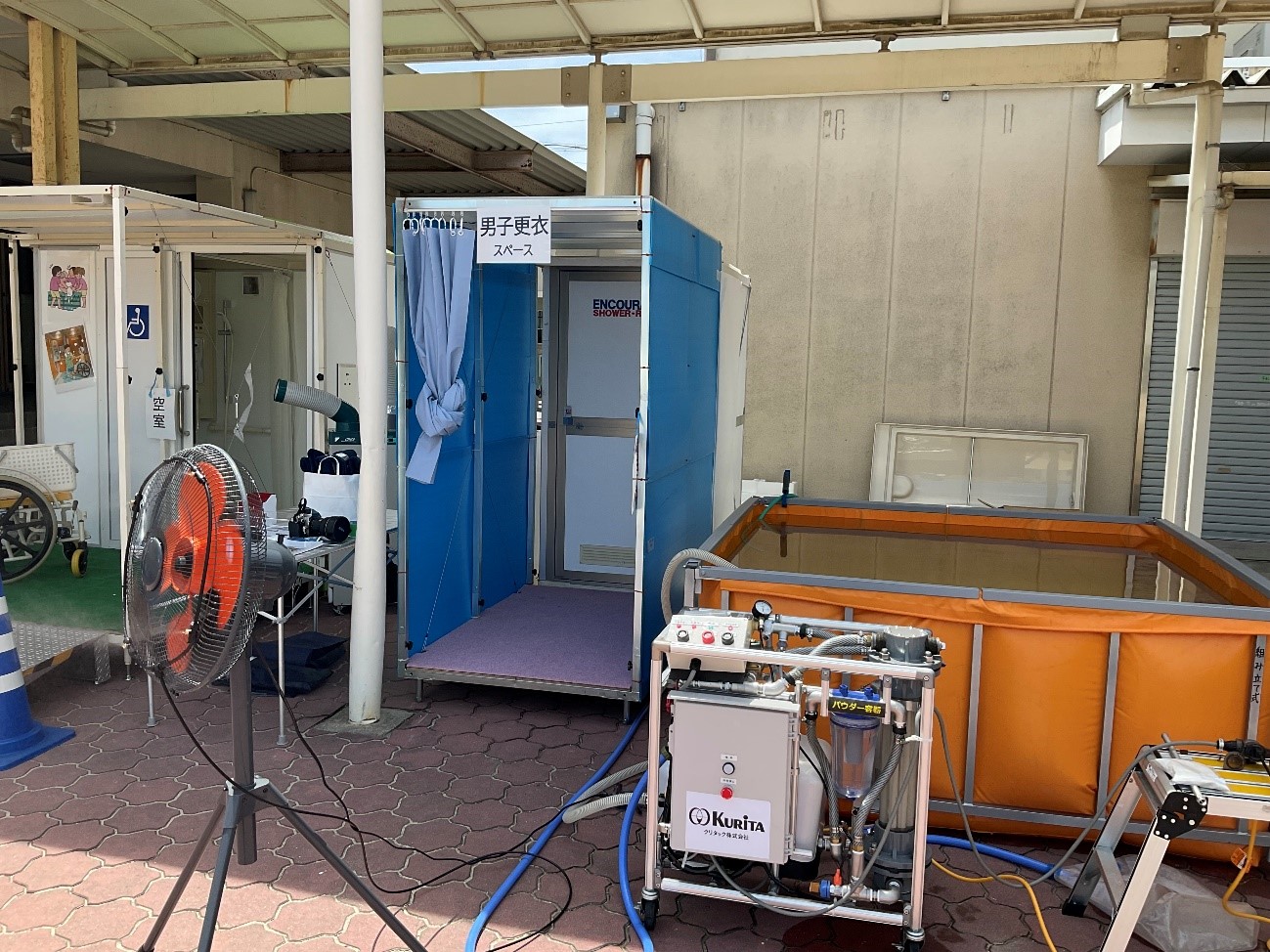
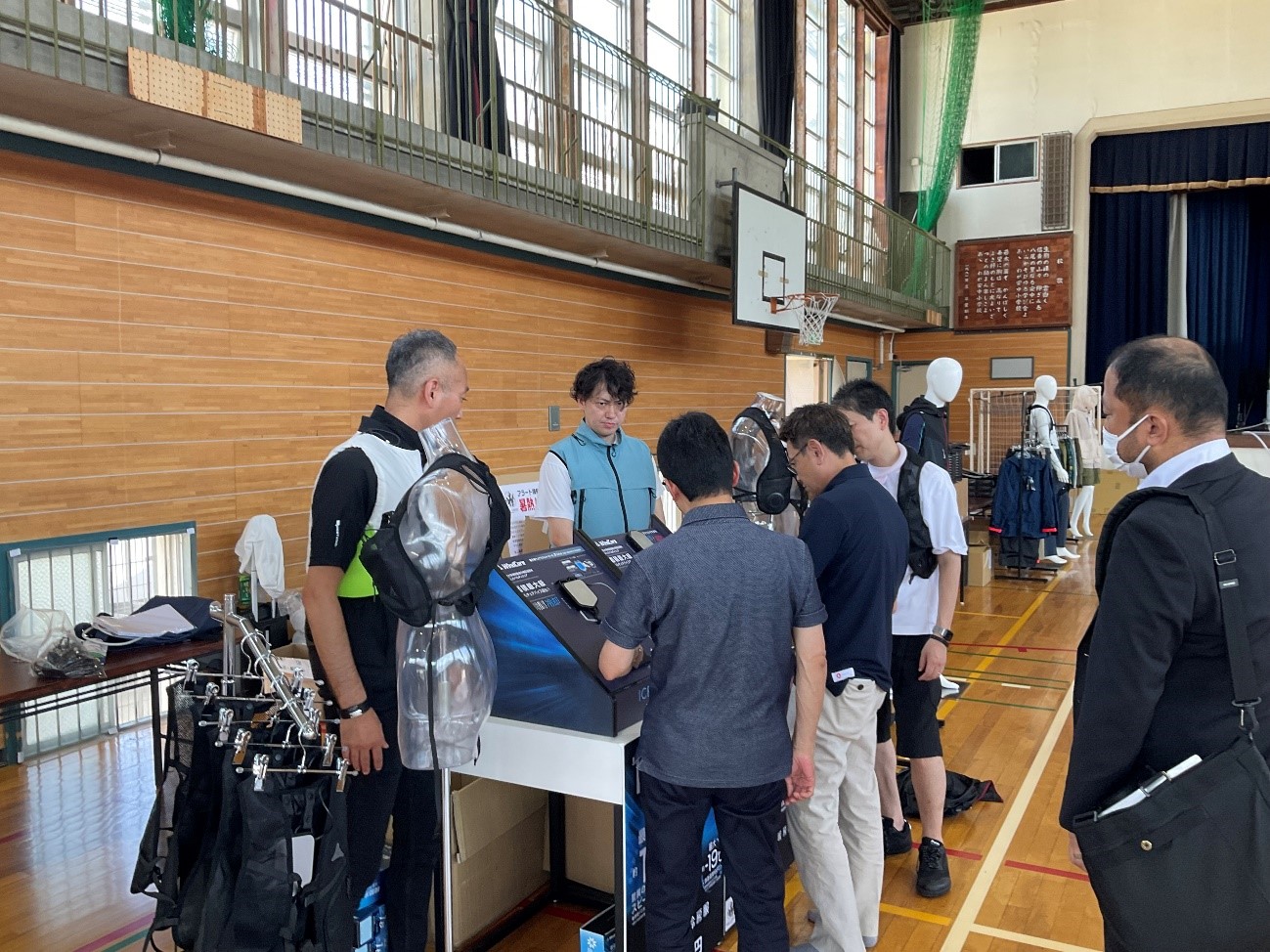
Positioning Disaster Management within the Framework of Climate
In Japan, a country stretching from north to south with significant climate variations even within the same period, anticipating the challenges of evacuation and relief efforts during extreme weather conditions is particularly complex. To address this, the Humanitarian Technology Unit has developed a new model focused on enhancing societal self-reliance in the face of climate-related disasters. This model includes three key steps:
- Identifying common health issues in severe weather conditions during both non-disaster times and emergencies.
- Conducting field exercises under harsh weather conditions.
- Co-creating and disseminating affordable solutions to address those common health issues.
The first step involves identifying common health issues, such as heatstroke and hypothermia, that arise during both normal and emergency situations. Recognizing these challenges before disasters occur is crucial, as natural hazards can exacerbate these risks.
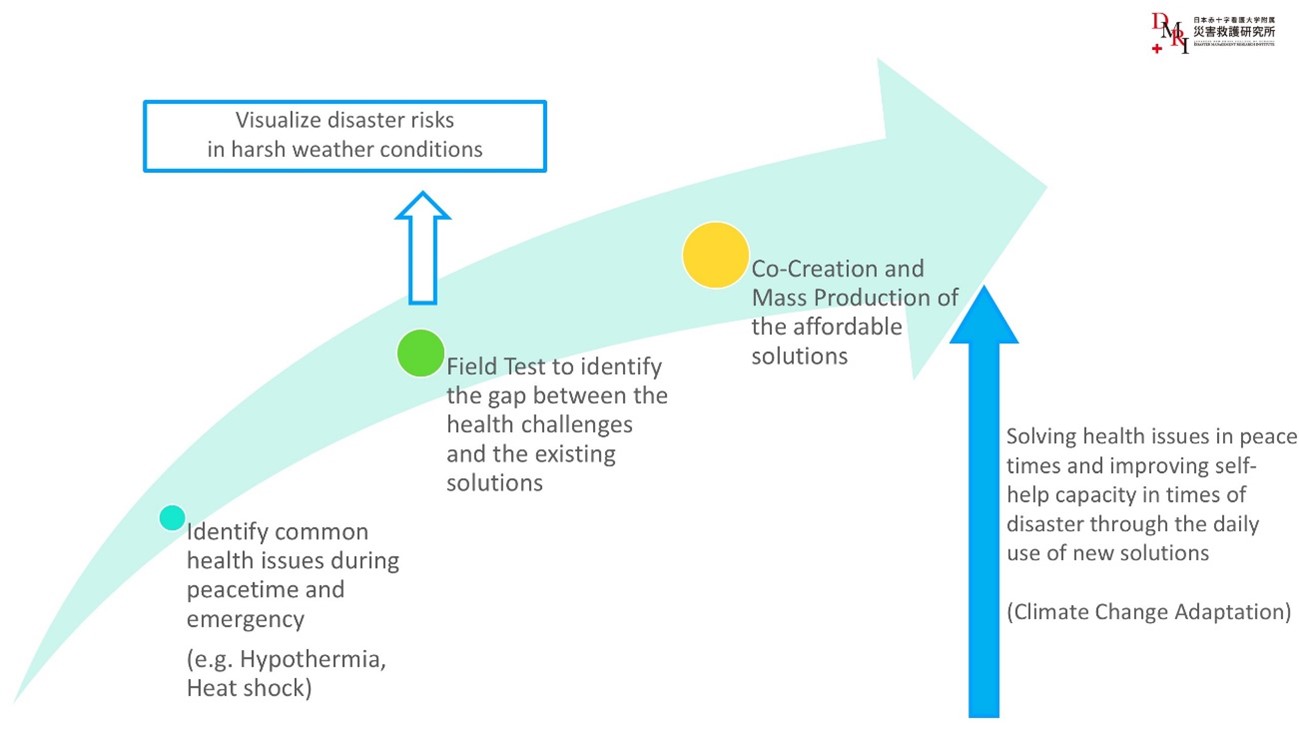
The second step is conducting field exercises in harsh weather conditions to reveal the gaps between health risks and existing solutions. For example, in typical Japanese evacuation shelters, plastic sheets are laid on the floor for evacuees to sleep on. However, during severe winter disaster drills, participants discover that these plastic sheets are ineffective in keeping out the near-freezing cold air coming from the floor. These exercises provide valuable insights into the real-life risks posed by extreme weather, which can be difficult to imagine for people, including Red Cross practitioners, living in different regions.
Finally, the third step focuses on co-creating and disseminating affordable solutions in partnership with the private sector. This collaboration aims to enhance societal self-reliance, not only for disaster preparedness but also for adapting to climate change.
Building Resilience for All Weather Conditions
The traditional disaster management cycle — comprising mitigation, preparation, response, and recovery — typically takes a time-based approach, factoring in climatic conditions within each phase. However, this model often overlooks the critical regional and seasonal climate variations that can greatly affect disaster preparedness and response.
For example, disaster prevention expertise from one region may not be effective in another with different climate challenges. A striking illustration is the Great Hanshin-Awaji Earthquake in January 1995, when a Red Cross ambulance dispatched from a warmer region malfunctioned in the disaster zone because its cooling water froze — an unforeseen issue caused by the colder climate.
In addition, while many people rely on air conditioning and heating to cope with extreme weather, vulnerable groups, such as the elderly, often avoid using these systems due to cost concerns or accessibility issues. This leaves them at heightened risk of heatstroke and hypothermia, both in everyday life and during disasters. When disasters damage homes and disrupt essential services, even those who are usually well-protected by climate control are at risk of severe weather-related health issues in evacuation centers.
Given the time required for external relief efforts to reach affected areas, it is essential to promote solutions for extreme climatic conditions proactively, even during non-disaster periods. Recognizing the need, the Humanitarian Technology Unit is developing a new disaster management model that integrates climate considerations into every phase of preparedness and response. By co-creating solutions for issues like heatstroke and hypothermia in both daily life and emergencies, this model aims to build societal resilience and protect lives in all weather conditions.
